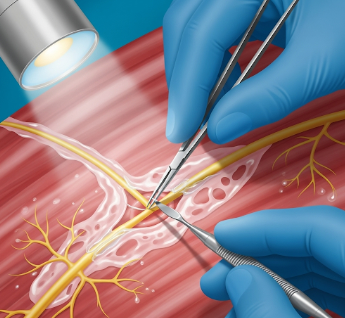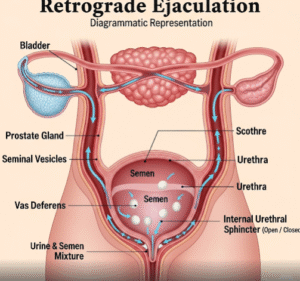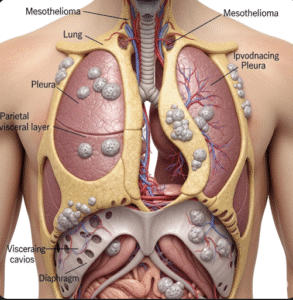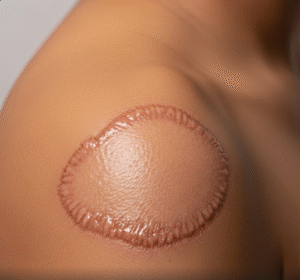Overview
Neurolysis is a medical procedure aimed at relieving pain or restoring nerve function by breaking down scar tissue, adhesions, or damaged nerve fibers that compress or trap a nerve. It can be performed through surgical, chemical, or thermal techniques depending on the patient’s condition.
In South Korea, neurolysis is frequently used in cancer pain management, chronic nerve entrapment syndromes, and post-traumatic nerve injuries. Korean hospitals utilize advanced imaging, microsurgical techniques, and minimally invasive procedures to ensure safer and more effective outcomes.
What is Neurolysis?
Neurolysis refers to the process of freeing a nerve from surrounding scar tissue or adhesions to restore its function or to reduce chronic pain. There are different forms of neurolysis:
✔ Surgical neurolysis: Nerve is exposed and freed from scar tissue.
➔ Chemical neurolysis: Involves alcohol, phenol, or other agents to destroy problematic nerve fibers.
● Thermal neurolysis: Uses radiofrequency or cryoablation to disrupt pain signals.
★ Adhesiolysis: Removal of fibrous bands that compress nerves, often seen in spine or extremities.
What are the Benefits?
The main benefits of neurolysis include:
✔ Pain relief for chronic nerve-related pain.
➔ Improved mobility by releasing trapped nerves.
● Enhanced quality of life for cancer patients experiencing severe pain.
★ Alternative to long-term medication, reducing reliance on opioids.
➤ Restoration of nerve function in cases of entrapment or scarring.
Procedure Details
1) How should I prepare for Neurolysis?
Patients undergo a detailed evaluation before neurolysis:
✔ Diagnostic imaging (MRI, ultrasound, CT): To locate the nerve compression.
➔ Medication adjustments: Blood thinners may be stopped before the procedure.
● Fasting: Usually required if general anesthesia is planned.
★ Medical history review: Especially important for cancer patients or those with prior surgeries.
➤ Counseling: Patients are informed about risks, benefits, and possible outcomes.
2) What happens during the procedure Neurolysis?
The approach depends on the type of neurolysis:
✔ Anesthesia: Local, regional, or general depending on technique.
➔ Surgical neurolysis: Surgeon makes an incision, identifies the affected nerve, and carefully frees it from scar tissue.
● Chemical neurolysis: Alcohol or phenol injected around the nerve under imaging guidance.
★ Thermal neurolysis: Radiofrequency or cryoablation probe applied to the nerve.
➤ Duration: Most procedures last 1–3 hours.
South Korea often uses image-guided minimally invasive neurolysis for greater precision and less recovery time.
3) What happens after a Neurolysis?
Recovery depends on the approach:
✔ Hospital stay: Short, often same-day discharge for non-surgical methods.
➔ Pain management: Temporary discomfort managed with medications.
● Physical therapy: Recommended to improve mobility and prevent recurrence.
★ Activity restrictions: Heavy activities should be avoided for several weeks after surgical neurolysis.
➤ Follow-up visits: Ensure nerve healing and assess pain relief.
Risks / Benefits
Possible Risks:
✔ Infection at the procedure site
➔ Bleeding or hematoma formation
● Temporary or permanent numbness/weakness
★ Incomplete pain relief or recurrence of symptoms
➤ Damage to nearby tissues
Major Benefits:
✔ Effective long-term pain relief for many patients
➔ Reduced reliance on painkillers
● Restoration of nerve function when compression is released
★ Improved quality of life, especially in cancer care
➤ Minimally invasive options available in Korea
Recovery and Outlook
✔ Return to light activity: Within a few days for non-surgical neurolysis, 2–4 weeks for surgical.
➔ Pain relief duration: Can last months to years depending on condition.
● Cancer patients: Often experience significant improvement in palliative care.
★ Chronic pain patients: May need repeat procedures if symptoms recur.
➤ Long-term outlook: Positive when combined with rehabilitation and lifestyle modifications.
When To Call the Doctor
Seek medical advice if you experience:
✔ Severe pain, swelling, or bleeding at the treatment site
➔ Signs of infection (fever, redness, pus)
● Loss of muscle strength or sensation
★ Uncontrolled pain despite treatment
➤ Breathing difficulty or severe reaction after injection-based neurolysis
Best Korea Option / Process
South Korea offers some of the best neurolysis treatments worldwide, with access to:
✔ Top hospitals like Severance Hospital, Asan Medical Center, Seoul National University Hospital.
➔ Advanced imaging guidance (ultrasound, CT, MRI) for precision targeting.
● Specialized pain clinics providing both surgical and minimally invasive options.
★ Multidisciplinary approach: Collaboration between neurosurgeons, anesthesiologists, and pain specialists.
➤ International patient support: Translation services, personalized care, and advanced rehabilitation.
✅ Highlights:
✔ Neurolysis frees nerves from scar tissue or destroys painful nerve fibers
➔ Used for chronic pain, cancer pain, and post-surgical scarring
● Methods include surgical, chemical, and thermal techniques
★ Korea provides image-guided, minimally invasive neurolysis
➤ Improves mobility, reduces pain, and enhances quality of life













